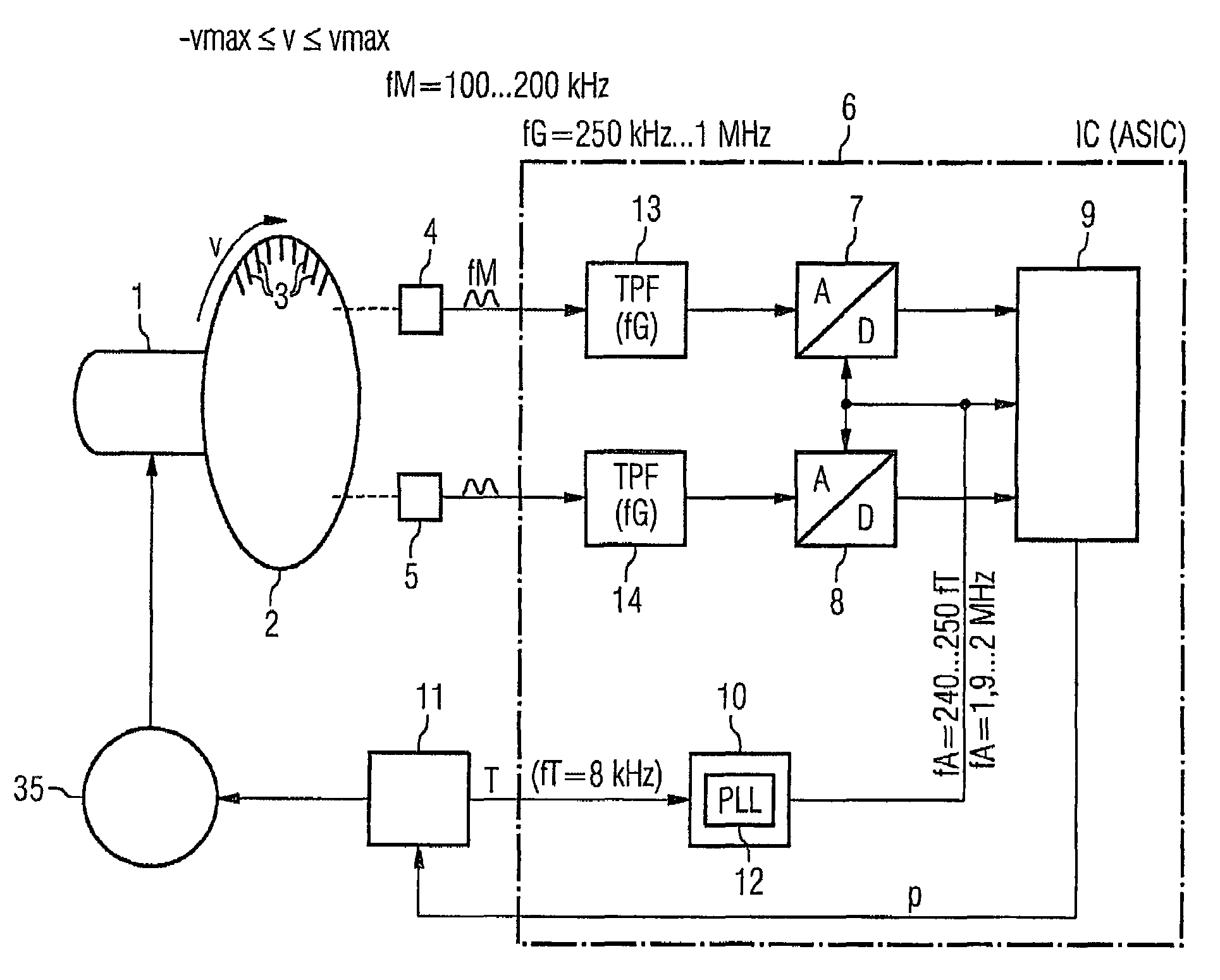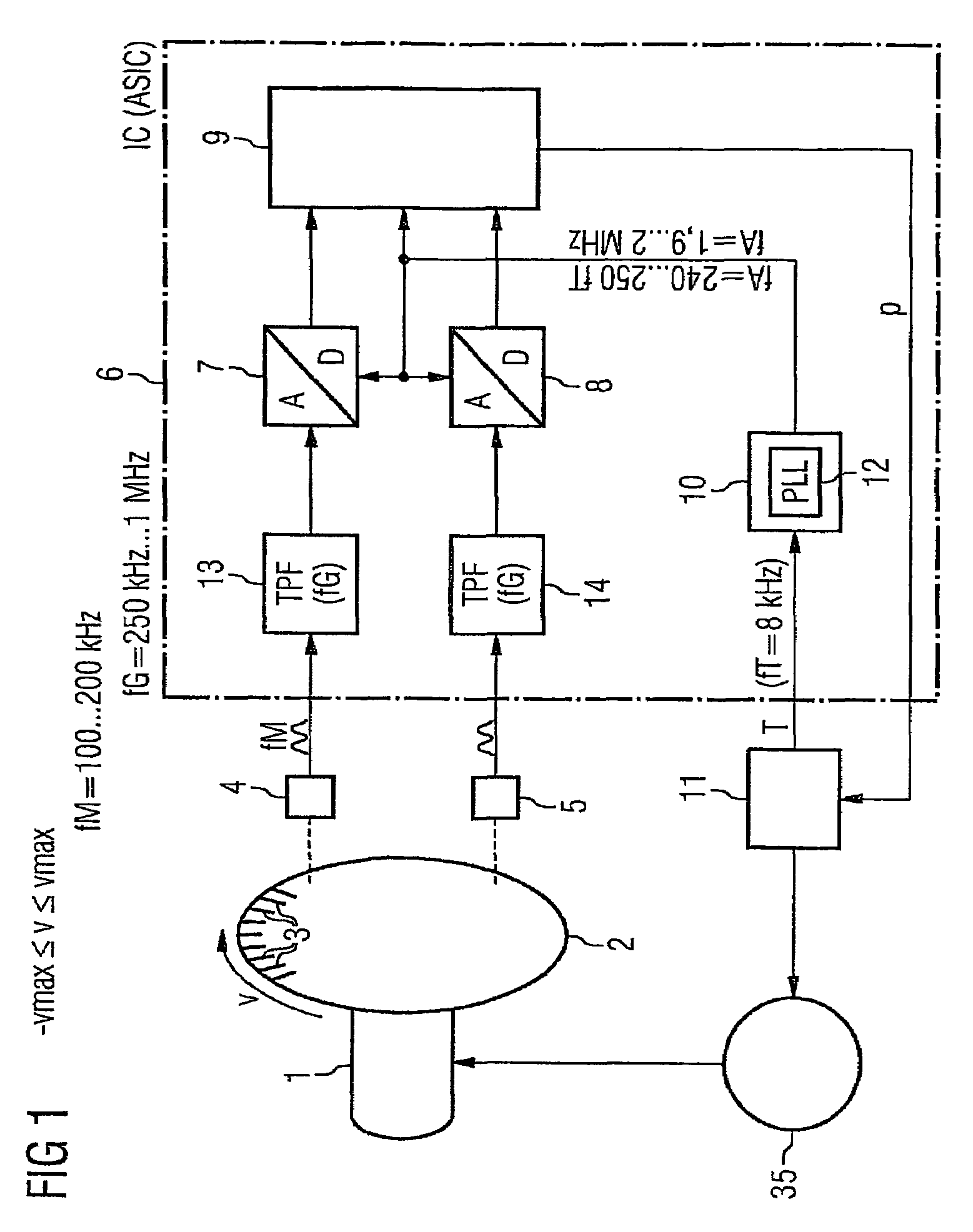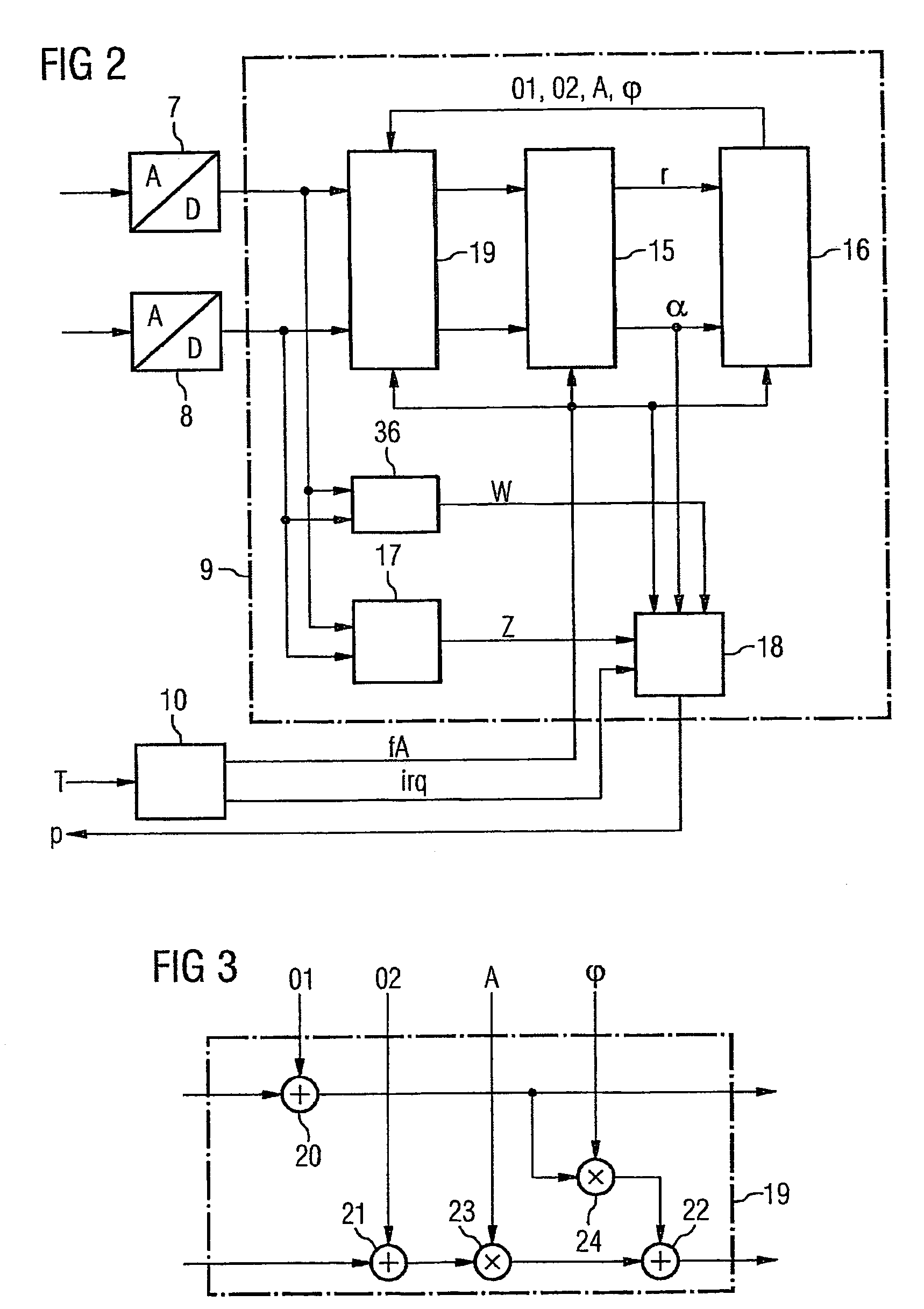Method for the evaluation of a first analog signal and a second analog signal, and evaluation circuit corresponding therewith
a technology of analog signal and evaluation circuit, applied in the field of methods, can solve the problem that the evaluation circuit needs a large storage requiremen
- Summary
- Abstract
- Description
- Claims
- Application Information
AI Technical Summary
Benefits of technology
Problems solved by technology
Method used
Image
Examples
Embodiment Construction
[0043]According to FIG. 1, a movement—here a rotary movement—of an element 1 which is moving in relation to a further element, is meant to be recorded. To this end, a sensor disk 2 on which marking elements 3 are applied, is connected to the moving element 1. The marking elements 3 are e.g. optically scanned by two sensor units 4, 5.
[0044]The sensor units 4, 5 are components of the stationary element, in relation to which the moving element 1 can be moved. They deliver a first analog signal and a second analog signal. Both signals are essentially sinusoidal and about 90° out-of-phase relative to each other when the sensor disk 2 moves in a temporally uniform manner in relation to the stationary element. A position of the moving element 1 relative to the stationary element can thus be determined with the aid of the sensor signals within a period of the two signals. The methods for determining the position are generally known. In conjunction with a likewise generally known zero-crossi...
PUM
 Login to View More
Login to View More Abstract
Description
Claims
Application Information
 Login to View More
Login to View More - R&D
- Intellectual Property
- Life Sciences
- Materials
- Tech Scout
- Unparalleled Data Quality
- Higher Quality Content
- 60% Fewer Hallucinations
Browse by: Latest US Patents, China's latest patents, Technical Efficacy Thesaurus, Application Domain, Technology Topic, Popular Technical Reports.
© 2025 PatSnap. All rights reserved.Legal|Privacy policy|Modern Slavery Act Transparency Statement|Sitemap|About US| Contact US: help@patsnap.com



